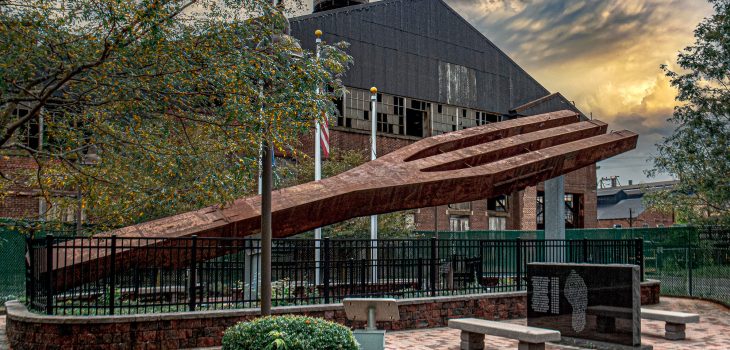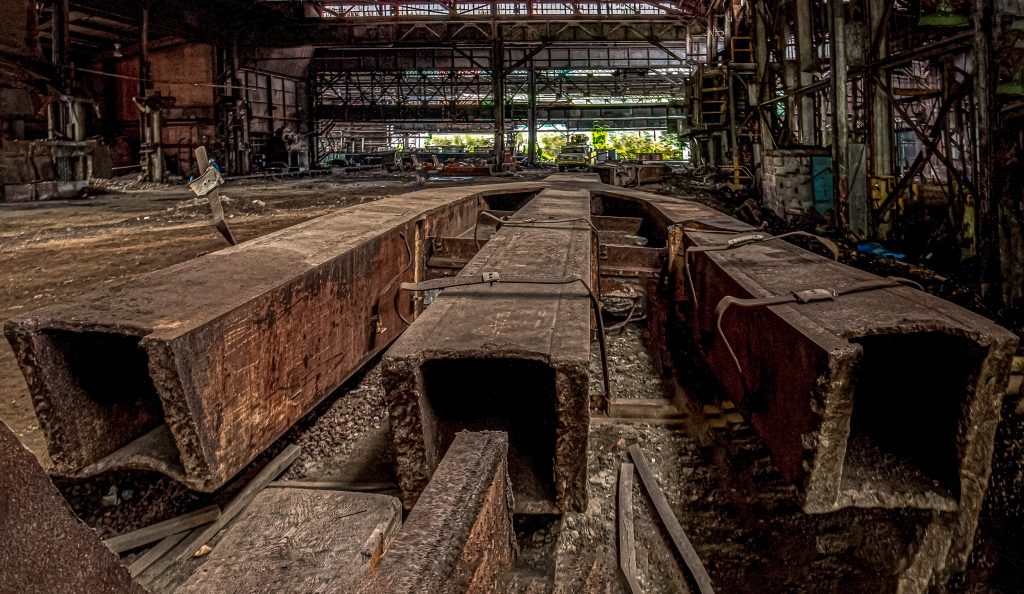 Personal Reflections
Personal Reflections
What Once Was
A few weeks shy of our nation’s twentieth-anniversary commemoration of the tragic events of September 11, 2001, I visited the abandoned Lukens steel rolling mill in Coatesville, Pennsylvania. For once, this urban explorer and her exploring group had permission to investigate this facility, but only with the presentation of a purchased on-demand insurance liability certificate. I love to photograph heavy industrial abandonments, perhaps because such facilities evoke nostalgia since I grew up in an Eastern Pennsylvania steel town. I looked forward to experiencing this steel mill’s look, smells, and color, or lack of color. Little did I realize how affected I was by the mill artifacts and their connection to New York City’s fallen World Trade Center.
Within minutes of arriving at the facility, the skies opened up and drenched all with sheets of seemingly incessant rain. Much confusion about the mill entry procedure prevailed because of this downpour. Still, the Lukens representatives corralled my group of explorers into the mill as I attended to the administrative paperwork inside the Lukens office. Even though the torrential rain created limited visibility outside, I could still grasp the Lukens landmark steel trident proudly displayed in front of the derelict rolling mill. I knew this trident, a/k/a steel tree, was a 35 ton, 70-foot structural support from the first nine floors and lobby of a World Trade Center tower. I also was aware that this colossal piece of steel stood in the rubble of the towers’ collapse. Nevertheless, I was taken aback to see nine additional massive steel trees resting inside the mill – each weighing up to 70 tons and up to 100 feet in length.
On April 14, 2010, nine years after the fateful day of 9/11, a tractor-trailer convoy of twenty-eight left New York City with ten World Trade Center steel structural supports. The steel trees were manufactured at the Lukens mill and were never expected to return home when they departed for New York City for the construction of the World Trade Center towers in the 1960s. Thirteen hours after departure, the steel trees arrived at their Lukens birthplace. Five hundred tons of World Trade Center steel returned home and were no longer required to be the foundational sentries for the towering symbol of American commerce and trade. Seeing the mammoth steel remains on the mill’s dirt floors and some stacked on each other is humbling and forces reminiscence about many aspects of that eventful day. Curiously, politics and even the essence of my urban exploration activities mingled in this thoughtful stew, too.
